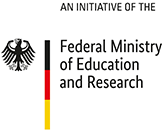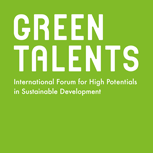PhD Student in Environment Science and Engineering at Hohai University, China
Research focus: heterogenous photocatalysis
Photocatalysis entails advanced oxidation processes, which involve the in-situ production of highly reactive transitory species accelerating abiotic pathways to degrade persistent organic compounds and microorganisms in water, without producing any secondary pollution.
Nirina’s research has generated increased charge transfer and enhanced visible light absorptivity, thus, improving overall photocatalytic performance. She hopes to prove that the technology can be scalable and can perform in ambient temperatures and pressures. Moreover, she endeavours to make it available as a decentralised and point-of-use technology that can be beneficial to isolated communities in rural regions, meaning it will become a lowcost, environment-friendly and sustainable treatment technology. Nirina intends to use her findings to increase access to clean drinking water in her home country of Nepal.
CV as submitted for the Green Talents award (2018):
Hohai University, China
Research focus: heterogenous photocatalysis
Nirina has identified water shortages and safety concerns, exacerbated by both increasing demand and water pollution, as major challenges in efforts to achieving the sustainable development goals and ensuring basic human rights in vulnerable communities.
She recognises the re-use and recycling of water supplies as the most efficient method for increasing water sustainability. In order to do this, Nirina is focusing on the photocatalytic treatment of water. Photocatalysis is currently regarded as one of the greenest methods for resolving energy problems as it allows for the use of solar energy. The technique entails advanced oxidation processes, which involve the in-situ production of highly reactive transitory species accelerating abiotic pathways to degrade persistent organic compounds and microorganisms in water, without producing any secondary pollution. Unlike many conventional treatment methods, photocatalysis does not just transfer the pollutants from one phase to another; the pollutants are in fact mineralised to innocuous forms, meaning the environmental impact is minimal.
So far, Nirina’s research has generated increased charge transfer and enhanced visible light absorptivity, thus improving overall photocatalytic performance. She hopes to prove that the technology can be scalable and can perform in ambient temperatures and pressures. Furthermore, she endeavours to make it available as a decentralised and point-of-use technology that can be beneficial to isolated communities in rural regions, meaning it will become a low-cost, environment-friendly and sustainable treatment technology. Along these lines, Nirina intends to use her findings to increase access to clean drinking water in her home country of Nepal. This will also involve spreading awareness about emerging contaminants and supporting the formulation of policies regarding waste water discharge.
Enhancing the efficiency of water treatment processes will not only improve human health, but will also contribute to a reduction in overall levels of pollution, as pollutants are currently passed on in the cyclic use of water. The jury recognised the benefit of this dual outcome and applauded Nirina’s eagerness to improve access to clean water for vulnerable communities in Nepal.






